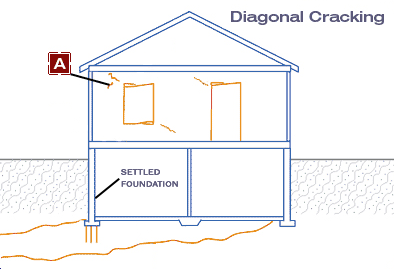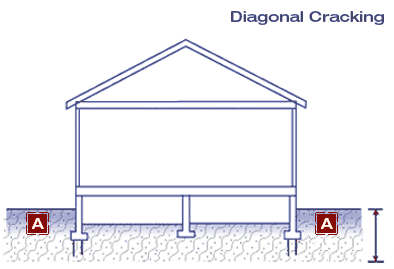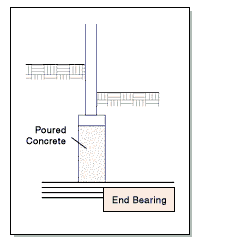Symptoms and Solutions: Diagonal Cracking of Walls
Problem

Causes

Settlement is usually caused by one of more of the following conditions:
- Long term consolidation of compressible clay under the foundation.
- Weaker, more compressible soil beneath a portion of the foundation. Frequently uncompacted fill.
- Increased pressure on a portion of the foundation possibly from the weight of a new addition.
- Periodic volume changes in some clay soils because of changes in their water content.
Solutions
The preferred solution for settlement is to deepen, or underpin the settling foundation down to a depth below the zone causing the problem. The choice of underpinning system depends on the specific conditions of the property. Note: "Active" underpinning can be loaded to relevel the home. "Passive" underpinning prevents further settlement but cannot relevel a home.
Depending on conditions, costs typically run $400 - $500 per linear foot of foundation underpinning.
Roll over the links below to view the typical underpinning applications below.
